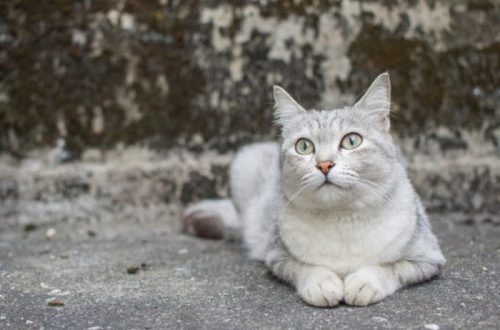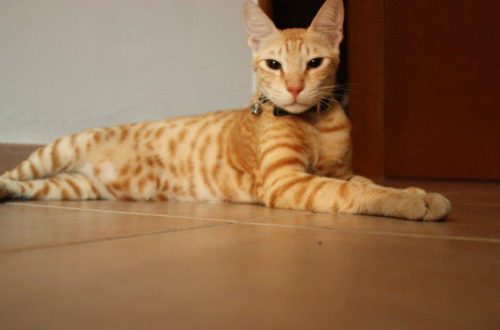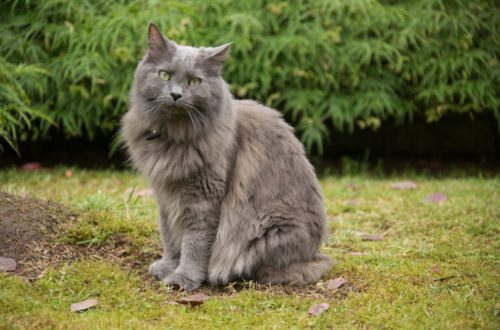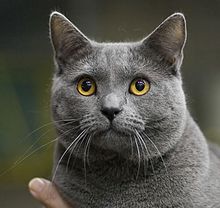
Chartreux
Other names: Carthusian cat
Chartreux is a delicate intellectual from France, known for his complaisant disposition and the ability to find a common language with others. It’s hard to refuse such a companionable friend!
Contents
Characteristics of Chartreux
| Country of origin | France |
| Wool type | Shorthair |
| Height | up to 30 cm |
| Weight | 3-7 kg |
| Age | 12-15 years old |
Basic moments
- Chartreux make delightful and sensitive companions that will get along with most people.
- “Carthuxians” skillfully combine attachment to the family and the ability to easily endure loneliness.
- Representatives of the breed are quite phlegmatic, do not make a mess and do not seek to win back your territory.
- A distinctive feature of Chartreuxis a delicate meow. In addition, the animals are quite silent and will not bother you with loud sounds.
- Cartexian beauties find a common language with cats and dogs, but they can “fight” with them for your love.
- The developed instinct of the hunter is the main reason why you should not leave the animal alone with birds, rodents and other medium-sized pets.
- Although the Chartreux is very smart, they are not amenable to training, but they quickly get used to their own nickname.
- “Carthusians” do not need careful care; standard procedures and regular visits to the veterinarian are sufficient.
- Representatives of the breed rarely get sick due to strong immunity.
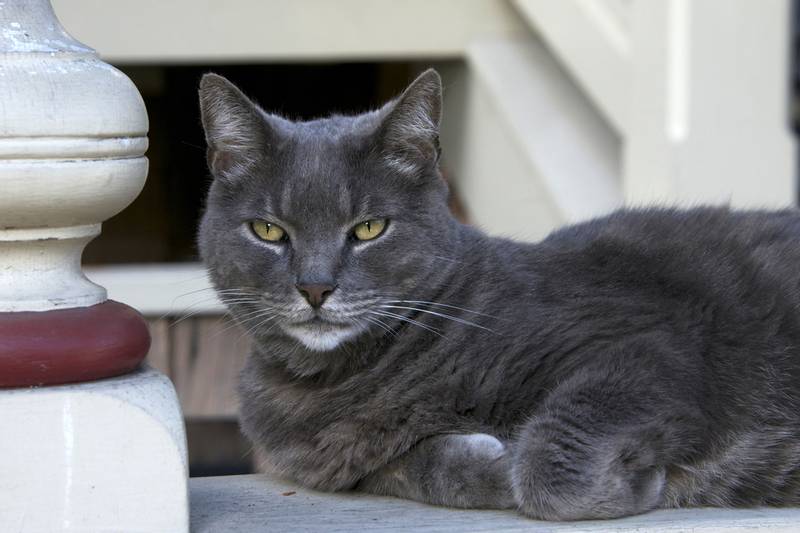
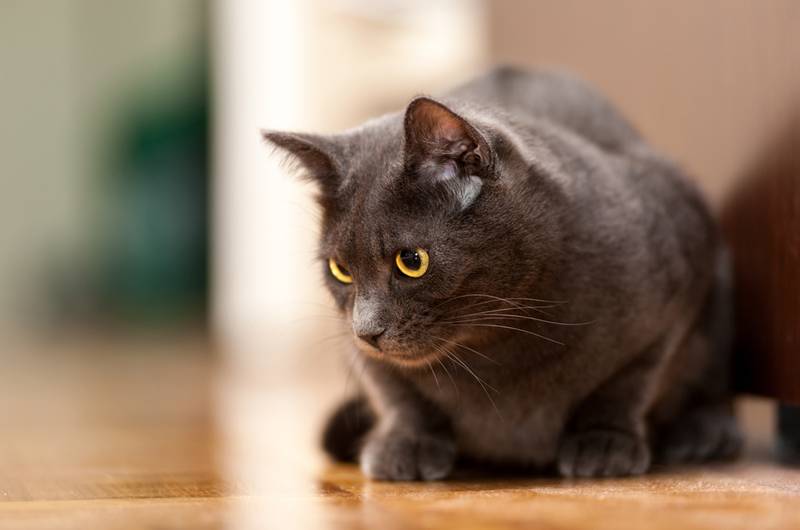
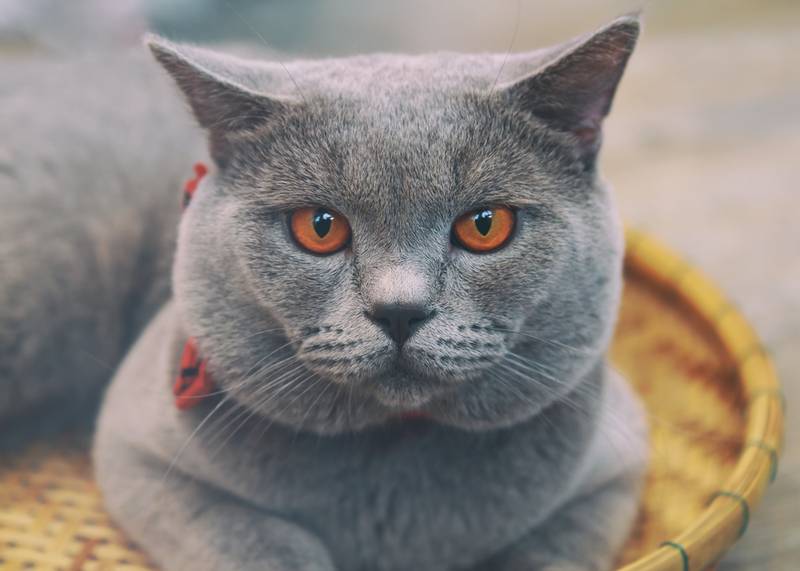
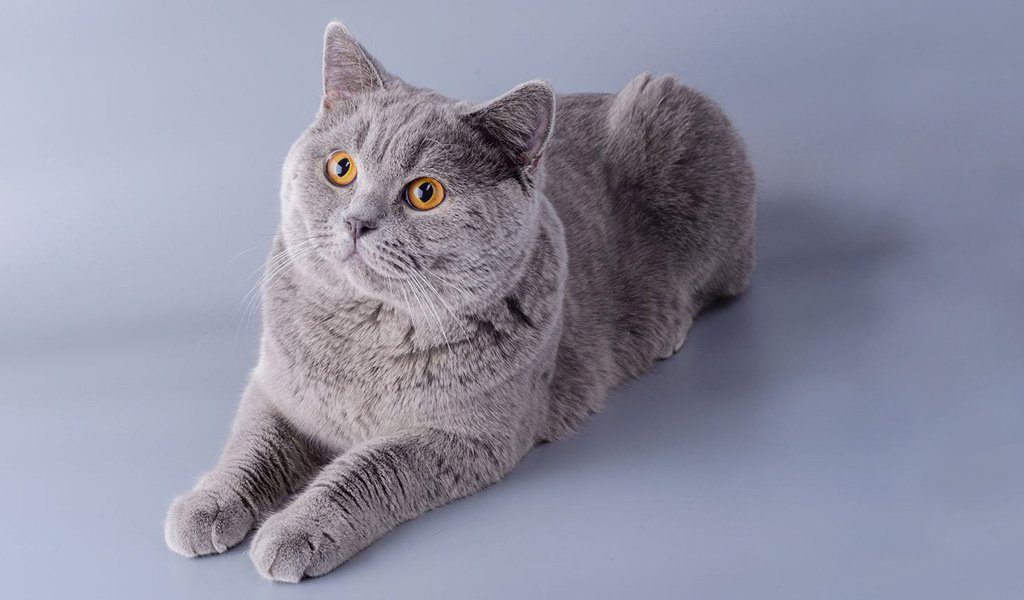
Chartreux is amazing in many ways. His refined appearance and gentle nature impresses even dog owners. This fluffy monsieur will not disturb the owner with a loud meow and will never impose his company. In the piggy bank of other positive qualities of chartreux – calmness and prudence. An animal will never start a fight unless it’s about hunting or fighting a rival for your priceless attention!
History of the Chartreux breed
The origin of chartreux is shrouded in mystery. Most felinologists associate it with the religious France of the 16th century. Most likely, the animals ended up in the country thanks to merchant ships that brought goods from the African continent. Another version connects the Chartreux with Spain, the main exporter of woolen fabric, which has a consonant name. The least common theory links the origin of cats to Asia Minor, from where the animals could come with the crusaders.
In the 16th century, the Carthuxian order dominated France. His first and main abode was located in the southeast of the country. In their free time from prayer, the monks cooked, washed clothes, copied old folios, and even did charity work. Almost the main source of income for the Carthuxians was the production of chartreux, a liquor made from wild herbs. Since the rodents were destroying the ingredients of the drink and the grain reserves, the monks needed four-legged hunters.
The choice fell on shorthair blue cats. They were distinguished by impeccable instincts and dexterity. In addition, the animals practically did not meow and did not distract the monks from the service. The Carthuxians also bred cats for inhumane reasons: for meat. The skins were often resold to merchants, who tinted them and passed them off as valuable furs. Consumer attitudes towards animals did not stop until the second half of the 17th century. The Carthuxian order gradually lost its influence due to the Reformation and the religious wars that followed it. In the 19th century, the monks returned to the socio-political arena, but they failed to achieve their former greatness.
After the collapse of the Carthuxian order, the Chartreux gradually migrated to the families of the French. During the First World War, the number of animals declined sharply. The breed was on the verge of extinction, and connoisseurs of short-haired handsome men decided to act. Based on historical and literary sources, the first breed standard was formulated. Only those animals that fully met the stated criteria were allowed to breed.
The perseverance of breeders paid off: in 1931, purebred Chartreux first appeared at a cat show in France. Then one of the short-haired handsome men was awarded the title of “Best Cat of the Competition”. After 8 years, an officially fixed breed standard appeared.
The resounding success was followed by another crisis. World War II contributed to the mass extinction of cats throughout Europe. Chartreuxes were also on the list of four-legged victims. Animals died during the fighting or were actively destroyed by local residents for food. By the middle of the 20th century, the number of “Cartexians” was extremely small. In attempts to revive the breed, breeders crossed the remaining Chartreux with British Shorthairs , Russian Blues and Persians . So, the signs of individual breeds gradually disappeared, and the differences between them weakened. This caused a conflict in 1970, when the international organization FIFe united the “Carthuxians” and the “British”into one breed, the standard of which completely coincided with the standard of British shorthair cats . Only in 1977, thanks to the efforts of breeders, the breeds were again demarcated. Since then, crossing Chartreux with English counterparts has been considered undesirable.
The American line of the “Cartesians” deserves special mention. In 1971, the Gamon couple returned home, accompanied by new pets. The offspring of those Chartreuxes settled in the nursery De Guerveur, which belonged to the Leger sisters. Because Carthuxians have not been crossed with other breeds in the US, this line is considered genuine and genetically pure.
Chartreux is now recognized by most felinological associations. The exception is the British Cat Organization (GCCF). Its representatives still believe that the “Cartexians” were undeservedly given the title of an independent breed.
Video: Chartreux
Chartreux appearance
Carthusian cats are not as sophisticated as it seems at first glance. Under the spectacular “fur coat” are hidden strong muscles and powerful bones – the characteristic features of a skilled hunter. Sexual dimorphism is clearly expressed: males significantly outnumber females in size. Their body weight is 5.5-7 kg and 2.5-4 kg, respectively.
The Chartreux is a medium sized breed. There are also larger specimens. Despite the external heaviness, cats are not without grace and grace.
Head and skull
The head is broad, with rounded outlines. Its trapezoidal shape is formed by the powerful jaws of the animal. The upper part – the space between the ears – is narrowed and flattened. The skull is not convex, elongated and sharp areas are absent.
Muzzle
In comparison with the head, the muzzle looks narrower. The shape is an unpointed wedge. The stop is weakly expressed, ideally absent. The flat forehead goes into a wide and straight nose. Its tip should not be upturned. The lobe is pigmented in gray-blue color. Round and plump cheeks are located rather low, more pronounced in males, starting from the age of two months. Due to the distinct transition from the muzzle to the cheekbones, it seems that the Chartreux is always “smiling”. The chin is wide.
Ears
The ears of the Chartreuxes are small to medium in size, slightly arched at the base. Set high and at a right angle, so the animal looks alert. The tips of the ears are gently rounded.
Eyes
The eyes of the Cartesian cat are quite large, round in shape. The outer corners are slightly directed upwards, but this does not make the look slanted. The color of the iris varies from golden to copper hues. They should be deep and rich.
Jaws and teeth
The jaws of the animal are powerful and wide; provide a light yet firm grip. The dental formula is complete, with the presence of incisors, canines, premolars and molars.
Neck
Short and massive, weighted with muscles.
Frame
Representatives of the breed have a strong body, which is not without flexibility and agility. Males look more powerful than females. Strong bones are underlined by muscles. Shoulders broad, chest deep and well developed. The lines of the back and croup are straight.
Tail
The cat’s tail is of medium length, has a wide and massive base, but gradually tapers towards the tip. The tip itself is oval.
limbs
The limbs of the Chartreux can be short or medium in length. Strong musculature contrasts with thin bones. The paws are small and rounded, the fingers are gathered into a ball and end in powerful claws. The pads are characterized by gray pigmentation, according to the TICA standard – dark pink.
coat
The short and dense coat has a dense texture and a healthy sheen. The hairs are slightly raised due to the undercoat and loosely attached to the body of the animal. The “fur coat” of the Cartesian cat is characterized by water-repellent properties.
Color
All shades of gray-blue are acceptable: from ashy to slate. Monochromatic blue is preferred, but a slight silvery tint is also possible. Marks appear on the coat of kittens, but they disappear by the age of six months.
Possible vices
The main defects of the Chartreux breed are recognized:
- almond-shaped and/or close-set eyes;
- white hairs in the coat;
- a sharp transition from the forehead to the muzzle;
- faded shades of the iris;
- wide and massive muzzle;
- marks on wool;
- snub-nosedness;
- tipping.
The animal is disqualified for the following reasons:
- red, brown or rusty color;
- white medallion on the chest;
- amputated claws;
- green iris of the eyes;
- cryptorchidism;
- deafness.
Chartreux character
If you are desperate to find an understanding and patient friend, take a closer look at the Carthusian cats! These animals are ideal companions for small and large families, workaholics and homebodies, young and old people. They do not require constant attention, but they accept affection with special joy. Like ghosts, chartreux follow the owners on the heels and leave at the first request. The pet will not be angry at the desire to spend the evening alone and will wait for your call.
Representatives of the breed have a warm relationship with all family members. No one will be deprived of the love of a furry friend! Chartreux is more attached to someone, less to someone: it depends on the nature of the animal. Despite the close relationship with people, the Carthusian cat calmly endures loneliness. In your absence, she will curl up in a ball and will not meow heart-rendingly under the door.
By the way, the voice of the Chartreux is very delicate. It is unusual to hear such quiet sounds from a large pet. Most of the time, the animal is silent, expressing feelings with the help of an affectionate purr or head butt.
There is also a minus in the taciturnity of the “Cartesians”: if the cat gets into trouble, it will not be able to call you for help. However, this happens extremely rarely. Furry people from France are quite cautious and prefer not to get into trouble. They sensibly evaluate forces and do not enter into a fight with larger rivals. If this is unavoidable, the animals attack suddenly, without a battle cry, and fight almost to the last. This trait was inherited by Cartesian cats from their ancestors.
In everyday situations, the Chartreux are calm and phlegmatic, as if they were able to comprehend Zen even at the dawn of their existence. They are extremely difficult to get out of balance. Representatives of the breed get along well with their fellows; can get along with dogs, provided that they are friendly. Jack Russell Terriers , Pit Bulls , and Greyhounds often display hostility towards cats. Chartreux, most likely, will not make friends with these breeds.
The “Cartesian” will not get along with small domestic animals: decorative rodents, birds, reptiles and amphibians. Do not forget that in the past, French cats were valued for their impeccable hunting instincts. They also appear in games with the owner. If you loom the toy in front of the pet’s “smiling” face, you will notice how he is watching and waiting. Chartreux only needs one dexterous throw to catch prey, so it’s not worth the risk of leaving the cat alone with miniature pets.
Representatives of the breed tend to be jealous and defend the territory. If the Carthusian cat is not the only pet in the house, make sure that no one is left without your affection. Then we can safely hope for a fluffy truce.
Education and training
Chartreux – the owners of an inquisitive mind and rare insight. It will not be difficult for them to use the switch, turn on the water tap and even press the door handle to leave the room. The ingenuity of cats facilitates the process of education. With your help, “Carthusians” will learn good manners, easily get used to using a scratching post and a tray, and will not give up walking on a harness. Raise your pet from the first day you enter the house, as it will take more time and effort to train an adult Chartreux, and the result will be far from perfect.
As for training, traditional commands will have to be forgotten. Representatives of the breed consider it below their dignity to jump on someone’s orders, overcome an obstacle course and somersault. However, Cartesian cats easily get used to the nickname and even bring abandoned objects or toys to the owner. The main thing is not to raise your voice to the pet, otherwise his fluffy majesty will not forgive you such impudence.
Care and maintenance
Chartreux is an ideal pet for the reason that it does not need specific care. Recommendations for the correct maintenance of “Cartesians” are simple and do not require much effort.
Although the Chartreux is a short-haired breed of cat, its coat needs to be brushed weekly. The reason for this is a long and thick undercoat, which can become tangled and cause a lot of inconvenience to the animal. During the period of seasonal molting, it is worth combing out the hair of a Carthusian cat at least every other day, in the direction of hair growth – this way it will take on a well-groomed and healthy appearance. For the procedure, use a special glove or brush with rare teeth. A quality slicker will also come in handy.
If you are buying a Chartreux from a kennel, ask the breeder about the specifics of caring for a thick coat. This is especially true for those who have never had a pet before. Usually the undercoat is combed out with a slicker brush, and the outer hair is combed out with a massage brush. At the end of the procedure, walk with a wet hand over the pet’s “fur coat”. This will help get rid of the remaining hairs.
Representatives of the breed do not need regular water procedures, as they do an excellent job with personal hygiene. It is enough to bathe Cartesian cats once every six months, more often – only in extreme cases, for example, before participating in an exhibition. Choose a shampoo without harsh chemicals, ideally for shorthaired breeds. After bathing, dry the thick undercoat thoroughly with a hair dryer. At the same time, it is important to prevent drafts: even those with strong immunity can catch a cold.
To shorten the claws, a special tool is purchased. The claws are trimmed once a month literally by 3-4 mm, so that the animal does not leave a hook on carpets and upholstery fabrics. If the “Carthusian” regularly walks on the street and uses a scratching post, nail clipping will be required extremely rarely.
The eyes and ears of the Chartreuxes are washed as needed with a special lotion. It can be purchased at a pet store. Use a cotton pad or lint-free cloth to remove specks and excessive secretions. Representatives of the breed perfectly keep themselves clean, but this does not mean that you can let your pet’s hygiene take its course.
Caring for the oral cavity of the “Cartesian” is a brushing of the teeth every 1-1.5 weeks. To do this, use a paste for animals and a nozzle on the finger. An old toothbrush will work too. Carry out the procedure carefully: plaque and stone often form in Chartreux.
In young individuals, there is a problem with changing milk teeth to permanent ones. They sit firmly in the gum and practically do not loosen. To remove “children’s” teeth, contact a veterinary clinic.
Carthusian cats are unpretentious in food, but still you should not feed your pet dishes from the dining table. Suitable feed classes premium and super-premium. They contain perfectly balanced proteins and carbohydrates, supplemented with antioxidants, natural preservatives and vitamin and mineral supplements.
It is not recommended to include in the chartreux diet:
- some raw vegetables (tomatoes, garlic, onions, broccoli);
- pickled, fried and salted foods;
- offal in raw and boiled form;
- fish in large quantities;
- boiled potatoes;
- sweets and desserts;
- legumes;
- fatty pork;
- tubular bones;
- mushrooms;
- nuts.
Make sure your pet has 24/7 access to water. Ideally, it should be bottled, but tap water is also suitable if it is pre-infused for 6-8 hours.
Health and disease of the Chartreux
Carthusian cats are distinguished by excellent immunity and resistance to most viral diseases. Dislocation of the kneecaps is the most common congenital disease. In the future, it is fraught with lameness and weakness of the hind limbs. Usually animals with this defect are not involved in breeding.
Chartreuxes are also prone to hip dysplasia. Such cats are inactive, often lame and suffer from discomfort. A timely appeal to the veterinarian will help to suspend the disease or stop it altogether.
Sometimes animals suffer from gingivitis, which is fraught with tooth loss. To avoid this, it is worth carefully monitoring the hygiene of the oral cavity of the animal. Once a year, it is recommended to remove the tartar in the veterinarian’s office.
Despite excellent health, “Cartesians” need timely vaccination. It will increase life expectancy and protect your pet from dangerous diseases.
How to choose a kitten
Buying chartreux in the CIS countries is a difficult task. The export of breeding animals outside the US and France is prohibited, so count only on the purchase of a sterilized or neutered pet. Most often, these cats are brought from America. At the same time, it is advisable to book an animal in advance: the demand for smiling cats is quite high.
Taking advantage of the fact that not much is known about the breed, unscrupulous breeders sell culled “British” under the guise of purebred Chartreux. Do not want to become a victim of fraud? Take a look at the following differences:
- Chartreux has a more elongated head and not so large cheeks;
- The “coat” of the British cat does not have a clear distinction between outer hair and undercoat, their length is the same;
- the color of the “Cartesians” varies only within gray and blue shades;
- British cats have smaller ears;
- the tail of the Chartreux tapers from base to tip.
When choosing a pet, pay attention to its behavior. A healthy baby is active, shows curiosity, is moderately playful and is not afraid of harsh sounds. It is best to buy a Carthusian kitten at the age of three months and older. The animal no longer needs maternal care and quite easily gets used to new family members.
Chartreux price
Representatives of the breed will cost dearly to future owners. The minimum price tag starts at 350$ rubles and reaches the mark of 1500$. But do not be upset: for this money you get a real treasure! The character of chartreux is as pleasant as the taste of the liqueur of the same name.





